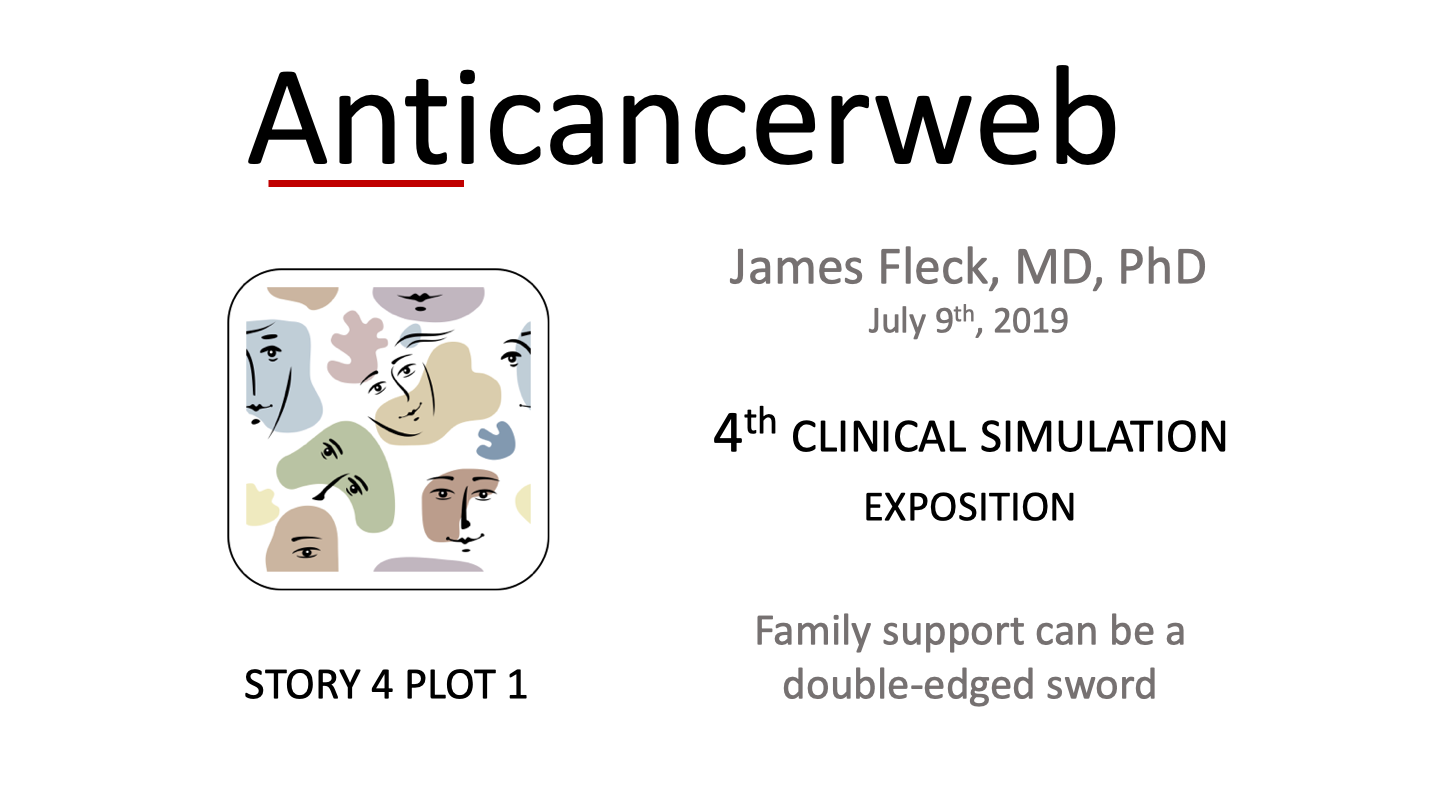
The Apathetic Patient | Exposition
Understanding passive aggressive behavior
(Fictional narrative by the doctor)
James Fleck, MD, PhD & João A de Andrade, MD
Anticancerweb 09 (07), 2019
Charles, a 68-year-old gentleman arrived for his first appointment. He was six feet tall and a rapid 17-pound weight loss made him look very thin. He came to discuss a recent chest CAT scan that showed a lung nodule and he was concerned that he had cancer.
Charles had been running his family business for over 45 years and felt responsible for everything and everyone. He was afraid the disease would have a huge emotional and financial impact on his family and on the 2,000 employees of his shoe factory. Despite having a very close knit family and being appreciated by his employees, Charles was a lonely man who spent most of his working hours smoking alone in his office. He was an introvert who did not like to talk much and came across as almost emotionless.
Charles was accompanied by his wife, Eleanor. She had a domineering personality and soon took over the medical interview, describing and interpreting her husband's symptoms. Of course, I directed the questions to Charles, but his wife always interjected before he could say anything. When I asked him about the presence of any chest pain, she abruptly interrupted by saying “yes”, but that “it was not too severe”.
Pain is a symptom that can only be described and quantified by the patient himself! I soon realized that she was trying to minimize her husband's illness, in a classical case of denial.
Despite his apathetic attitude, Charles was clearly the center of his family and his illness was a threat to their stability.
Charles seemed embarrassed by the presence of his wife. He looked resigned and distant as if he was feeling guilty for being sick.
For a moment, I contemplated asking Eleanor to leave us alone for the remaining of the visit but I was able to control my impulses!
The family was feeling vulnerable and I would have to engage them very early on as I worked to help Charles.
I would need to gain Eleanor's confidence to overcome the communication barrier she unconsciously imposed. I explained that I wanted to make sure all his questions and all the family’s questions were addressed regardless of how many appointments/conversations it might take.
I told them that the priority would be Charles's care, but that I would also be available to help the family understand and cope with what lied ahead. I clarified that the purpose of the first consultation would be to obtain as much information as possible about the history of the disease and to carry out a detailed physical examination of Charles.
I turned Eleanor's attention to a Renaissance painting book that I have in the consulting room and invited her to look at some works of art while I examined her husband in the adjacent room.
She agreed, and Charles was finally free to speak…He gave a nice summary of the events of the last few months and how he ended up in my office.
He said that about six months ago he lost his energy and motivation to work rather suddenly. He was a very methodical and neat man and when he felt too fatigued to keep up with his usual 14-hour-working day routine, depression set in. He stopped shaving, lost his appetite and his libido, and even neglected his personal hygiene.
Charles had three children. Two sons and one daughter. Although they were all in their 30s, they still lived in their parents’ home and worked in the family business. He described Eleanor as an overprotective mother that had a tendency to infantilize her children. She established a rule to avoid discussing any problems in the presence of the "children" and Charles had tacitly agreed to abide by it to avoid disturbing the family “harmony”.
Charles change in behavior caught everyone by surprise and they initially had a rather harsh and non-empathetic attitude, telling him to “keep it together” and to return to his routine as soon as possible. Charles struggled and the situation only got worse. Eleanor suggested that he saw a psychiatrist, but he resisted. He thought that his loss of appetite was probably related to some sort of digestive problem and decided to see a gastroenterologist instead.
The gastroenterologist was an expert in liver disease that, fortunately, had a comprehensive view of his patients’ health. He was very concerned with the sudden weight loss in a heavy smoker and ordered a comprehensive panel of blood tests and images, including a chest CAT scan. The chest CAT scan demonstrated a 3 cm nodule in the upper lobe of the left lung and he referred Charles to see me.
To be continued in PLOT 2 (rising action): Privacy
* Attention: The story 4 will be published sequentially from PLOT 1 to PLOT 6 and you will always see the most recent posting. To read Story 4 from the beginning, just click in the numbered links located at the bottom of the homepage.
© Copyright Anticancerweb 2020
James Fleck, MD, PhD: Full Professor of Clinical Oncology at the Federal University of Rio Grande do Sul, RS, Brazil 2019 (Editor)
Joao A. de Andrade, MD: Professor of Medicine and Chief Medical Officer, Vanderbilt Lung Institute, Vanderbilt University Medical Center, Nashville, TN – USA 2019 (Associate Editor)

Please login to write your comment.
If you do not have an account at Anticancerweb Portal, register now.